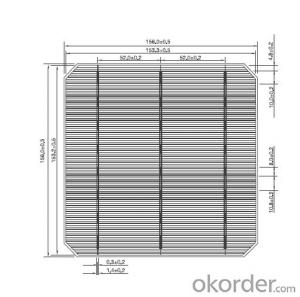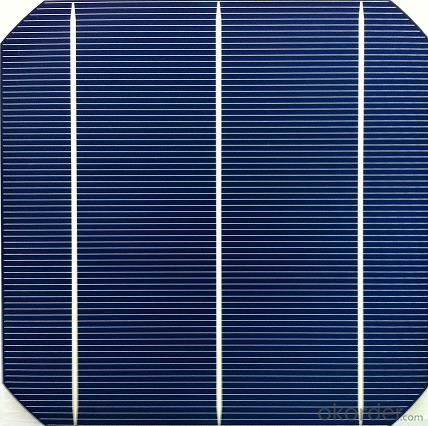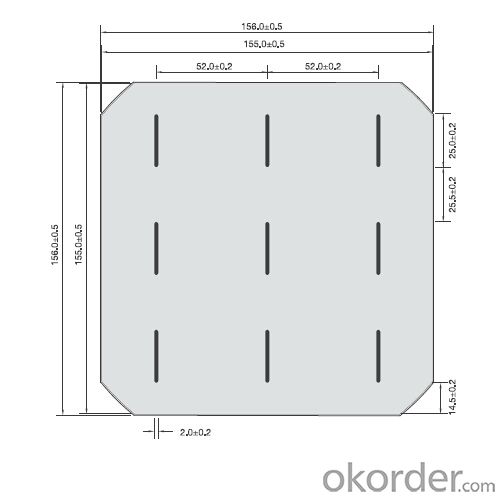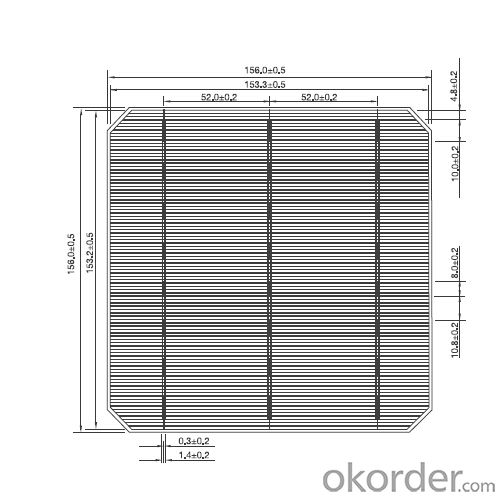Mono cell JAC M6SF-3 (Cypress2)
- Loading Port:
- China Main Port
- Payment Terms:
- TT OR LC
- Min Order Qty:
- -
- Supply Capability:
- -
OKorder Service Pledge
Quality Product, Order Online Tracking, Timely Delivery
OKorder Financial Service
Credit Rating, Credit Services, Credit Purchasing
You Might Also Like
JACM6SF-3 3BB CYPRESS2 MONO SOLAR CELL
JA solar's high effciency mono cell, manufacturing modules with more than 265W(6x10)and 320W(6x12)power putput becomes easier than ever.
Futures:
Format:156mmx156mm±0.5mm
thickness:210um±30um
Front:1.4mm bus bar(silver).blue anti-reflecting coating(silicon nitride)
back:2mm wide solding pads(silver)backsurface field(aluminum)
Data sheet
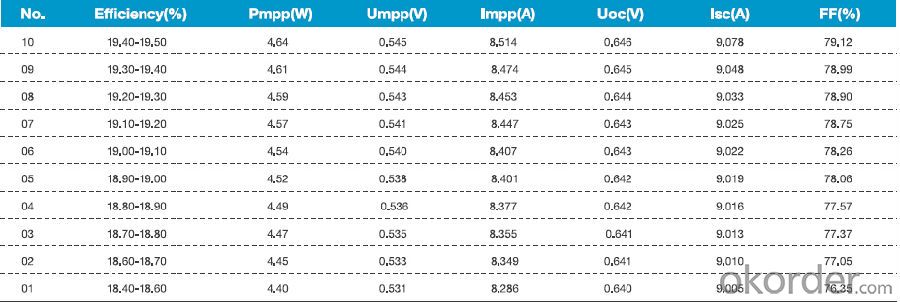
- Q: How do solar cells perform in low-light conditions?
- Solar cells perform less efficiently in low-light conditions compared to bright sunlight. The amount of electricity generated by solar cells is directly proportional to the intensity of light they receive. Therefore, in low-light conditions, such as during cloudy days or in shaded areas, solar cells produce less electricity. However, advancements in technology have improved the performance of solar cells in low-light conditions, enabling them to still generate some power even under these circumstances.
- Q: What is the impact of bird nesting on solar cell performance?
- Bird nesting can have a negative impact on solar cell performance as it can lead to shading of the panels, reducing their overall efficiency. Additionally, bird droppings can accumulate on the panels, obstructing sunlight and potentially causing damage to the cells over time. Regular maintenance and prevention measures are necessary to mitigate these effects and ensure optimal solar energy generation.
- Q: What is the effect of shading on solar cell performance?
- The effect of shading on solar cell performance is significant as shading can reduce the overall power output of the solar panels. When even a small portion of the solar cell is shaded, it creates a "hot spot" effect, leading to increased resistance and reduced electrical current. This can result in a notable decrease in energy production, impacting the overall efficiency and performance of the solar cell system.
- Q: How long do solar cells last?
- Solar cells typically have a lifespan of around 25 to 30 years. However, with proper maintenance and regular cleaning, solar cells can continue to generate electricity for even longer periods.
- Q: What is the best sales solution for solar power cells?
- I guess you should learn as much information as you can about solar power cells. In this way, your client would trust you and finally buy solar power cells from you.
- Q: What are the disadvantages of using solar cells?
- One disadvantage of using solar cells is their high initial cost. The installation and purchasing of solar panels can be expensive for homeowners or businesses, making it less accessible for some people. Additionally, solar energy production is dependent on weather conditions, meaning that cloudy or rainy days can lead to reduced efficiency. Finally, the production of solar cells requires rare materials, such as silicon, which can have negative environmental impacts if not managed properly.
- Q: How do solar cells perform in areas with extreme temperature fluctuations?
- Solar cells can be affected by extreme temperature fluctuations. High temperatures can cause solar cells to become less efficient and generate less electricity, while very low temperatures can reduce their ability to function optimally. However, advancements in technology and the use of materials that are more resistant to temperature changes have improved the performance of solar cells in areas with extreme temperature fluctuations. Additionally, proper installation and maintenance can help mitigate the impact of temperature fluctuations on solar cell performance.
- Q: Can solar cells be used in space exploration?
- Yes, solar cells can be used in space exploration. Solar cells are commonly used in satellites and spacecraft as a reliable and efficient source of power. They convert sunlight into electricity, allowing space missions to operate their electronic systems and power their equipment. Solar cells are a key component in providing sustainable energy for space exploration missions.
- Q: Can solar cells be used in farming or agriculture?
- Yes, solar cells can be used in farming or agriculture. They can be used to power various agricultural processes such as irrigation systems, lighting, and machinery. Additionally, solar panels can be installed on rooftops or in fields to generate electricity, reducing reliance on the grid and providing a sustainable energy source for farming operations.
- Q: Can solar cells be used for water heating?
- Yes, solar cells can be used for water heating. Solar thermal systems use solar energy to heat water directly, while solar photovoltaic systems can generate electricity to power water heaters. Both methods are efficient and environmentally friendly alternatives to traditional water heating systems.
Send your message to us
Mono cell JAC M6SF-3 (Cypress2)
- Loading Port:
- China Main Port
- Payment Terms:
- TT OR LC
- Min Order Qty:
- -
- Supply Capability:
- -
OKorder Service Pledge
Quality Product, Order Online Tracking, Timely Delivery
OKorder Financial Service
Credit Rating, Credit Services, Credit Purchasing
Similar products
Hot products
Hot Searches
Related keywords


